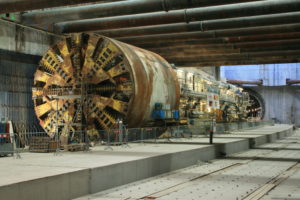The construction of subways is an engineering feat that can create an efficient public transportation system in major cities. One of the most important and widely used construction methods in subway construction is traditional shield tunneling. In this paper, we will take an in-depth look at this proven technique that allows tunneling in densely populated areas without disturbing the ground surface. From the basics to the challenges to the latest advances, we will explore the fascinating world of shield tunneling in subway construction.
Basics of shield tunneling
Shield tunneling is a special tunneling method that has become the backbone of subway construction in recent decades. The term “shield tunneling” refers to the shield, a huge steel structure that protects the tunnel from collapse and enables tunneling. The shield consists of a front cutting wheel, which is used to loosen the ground, and a pressure-resistant tunnel tube, which is attached directly behind the cutting wheel. Shield tunneling technology enables the precise and safe construction of tunnels in different soil types.
Advantages of the shield tunneling technique
The traditional shield tunneling technique has a number of advantages that make it the preferred method for subway construction:
- Safety: the shield protects tunnelers from unpredictable ground conditions and prevents cave–ins.
- Precision: Shield tunneling technology allows tunnels to be built with high precision and minimal deviation from the planned route.
- Minimal surface disturbance: Since the tunnels are excavated underground, shield tunneling causes minimal surface disturbance compared to cut-and-cover construction.
- Rapid construction progress: The continuous operation of shield tunneling technology and rapid construction progress enable tunnels to be built in a shorter time.
- Flexibility: Shield tunneling technology can be used in different soil types from sand, clay to rock.
Components of a shield machine
A typical tunnel shield consists of several main components:
- Cutting wheel roller: The cutting wheel roller is the front end of the shield and consists of a large rotating roller with a cutting tool. It loosens the soil to allow tunneling.
- Support Segments: Support segments are part of the tunnel tube and are used to hold the tunnel in place after the soil is excavated. They are made of concrete or precast steel.
- Jacking cylinder: The jacking cylinder is located behind the cutting wheel drum and pushes the blades forward when excavating the tunnel.
- Conveyor belt: The conveyor belt transports the excavated soil out of the tunnel.
- Pressure shield: The pressure shield is the rear end of the shield and pushes the tunnel forward when the support section is in position.
The shield tunneling method
Shield tunneling is a carefully planned and precise process that is carried out in the following steps:
- Preparation: the tunnel tube and shield are assembled and placed in the initial position before the tunnel is excavated.
- Cutting: The cutting wheel rollers start loosening the soil. The loosened material is transported out of the tunnel by a conveyor belt.
- Support: After excavation of the soil, the support sections are positioned to hold the tunnel in place and prevent collapse.
- Advance: The advance cylinders push the shield forward while the ground continues to be excavated and the support section holds the tunnel in position.
- Repetition: The process is repeated over and over again, building the tunnel meter by meter until the target is reached.
Challenges and solutions for shield tunneling
Despite the many advantages of shield tunneling, there are some challenges that need to be overcome:
- Soil conditions: different soil types require different techniques and tools to ensure smooth tunneling.
Groundwater: in areas with a high water table, tunneling can be more complicated and require additional sealing measures. - Soil compaction: In some cases, tunneling can result in soil compaction that affects the surrounding terrain.
- Underground obstacles: Tunneling must also be coordinated with other subway infrastructure (e.g., existing subway lines, sewer pipes, or power cables).
These challenges require careful planning and expertise to ensure the success of shield tunneling.
Progress and future prospects
Several advances have been made in shield tunneling technology in recent years. More modern shield tunneling machines have become more powerful, more precise and more environmentally friendly. The integration of information technology and automation has further optimized the construction process. In addition, ecological aspects such as energy efficiency and emissions are increasingly being taken into account.
In the future, further innovations could further improve shield tunneling technology. Advances in materials science and robotics could lead to lighter and more efficient shields. The use of renewable energy sources could offset the environmental impact of tunneling. Digital integration and the Internet of Things could make subway tunneling more accurate and safer.
Summary
Traditional shield tunneling in subway construction has a long history and has proven to be one of the most reliable methods for tunneling in densely populated areas. Safety, precision, low surface disturbance, and speed have led to this method being used for subway construction in many major cities around the world.



